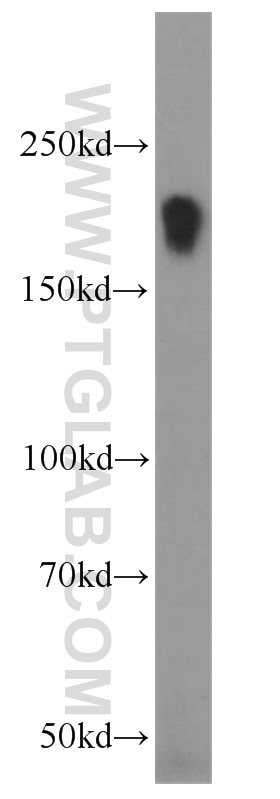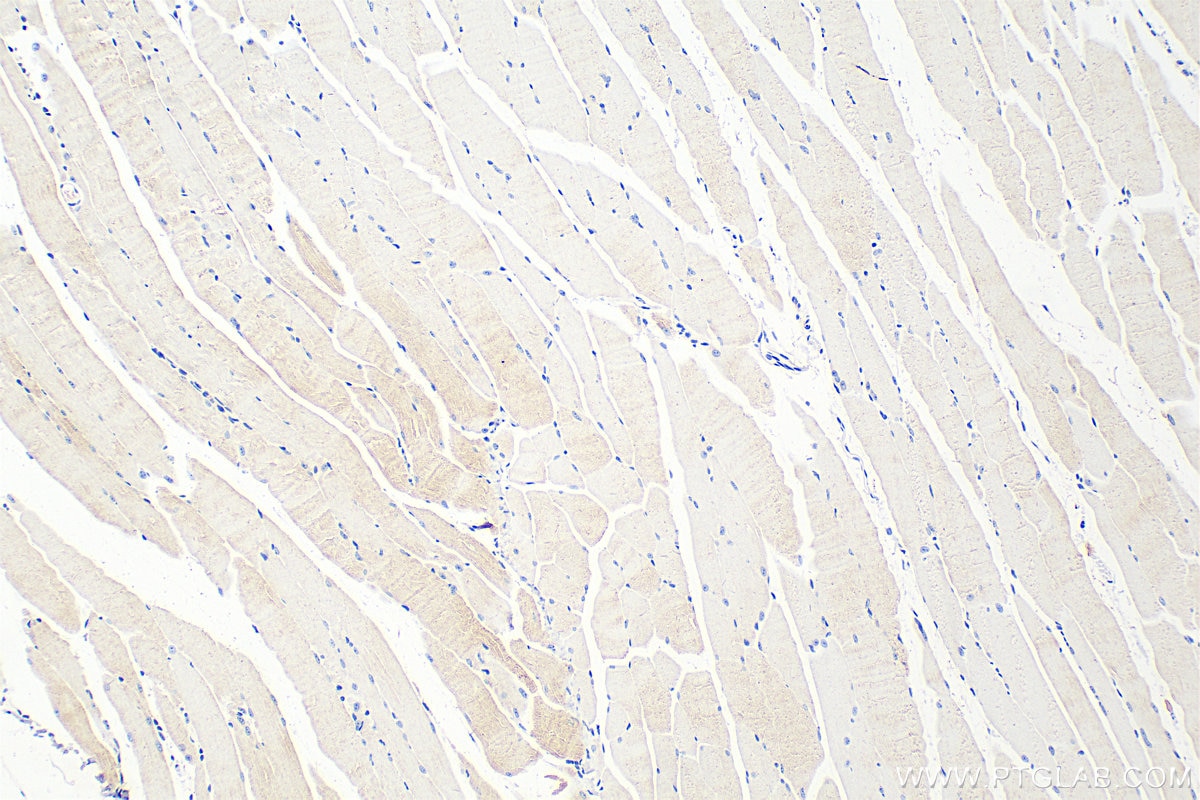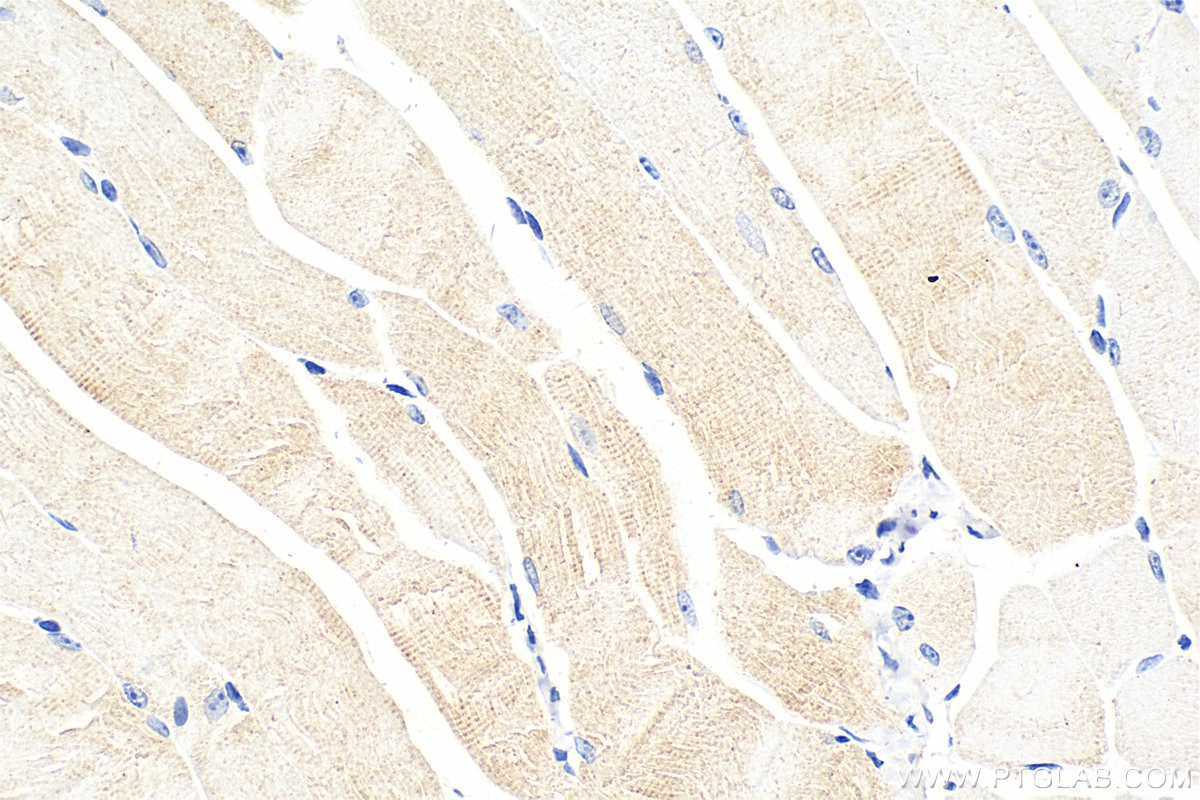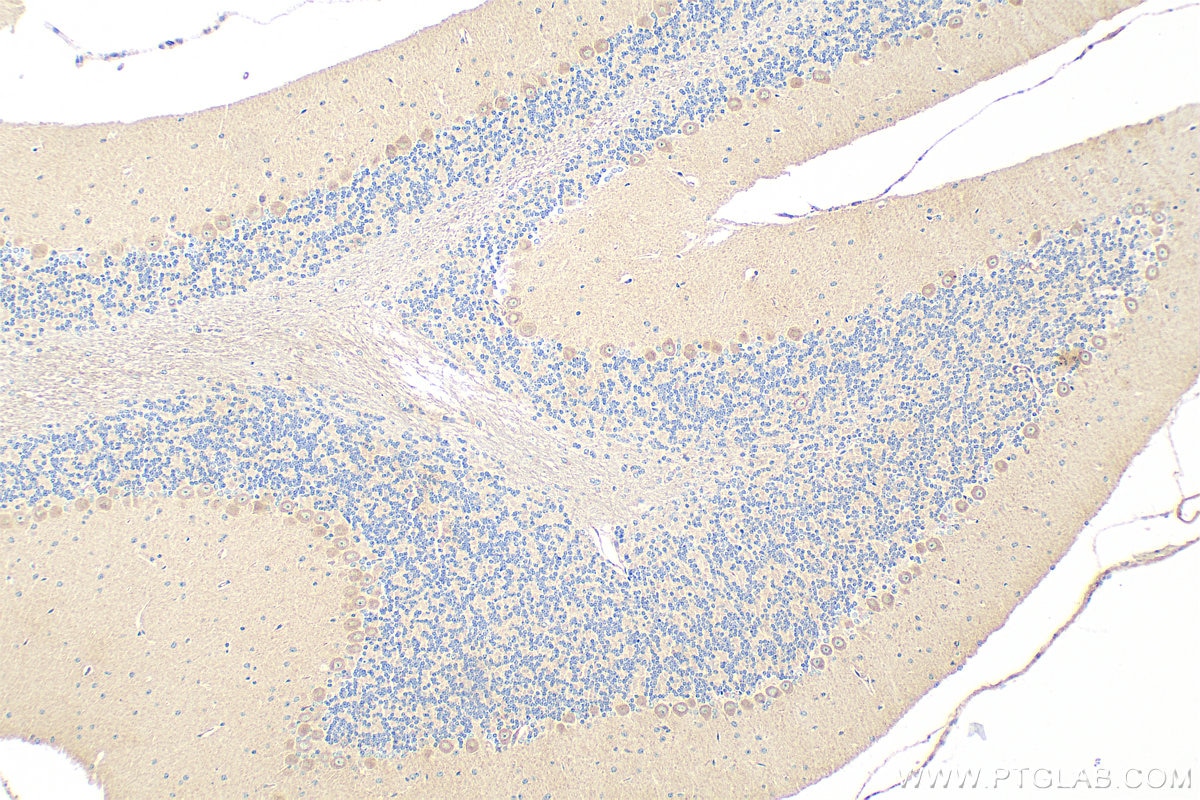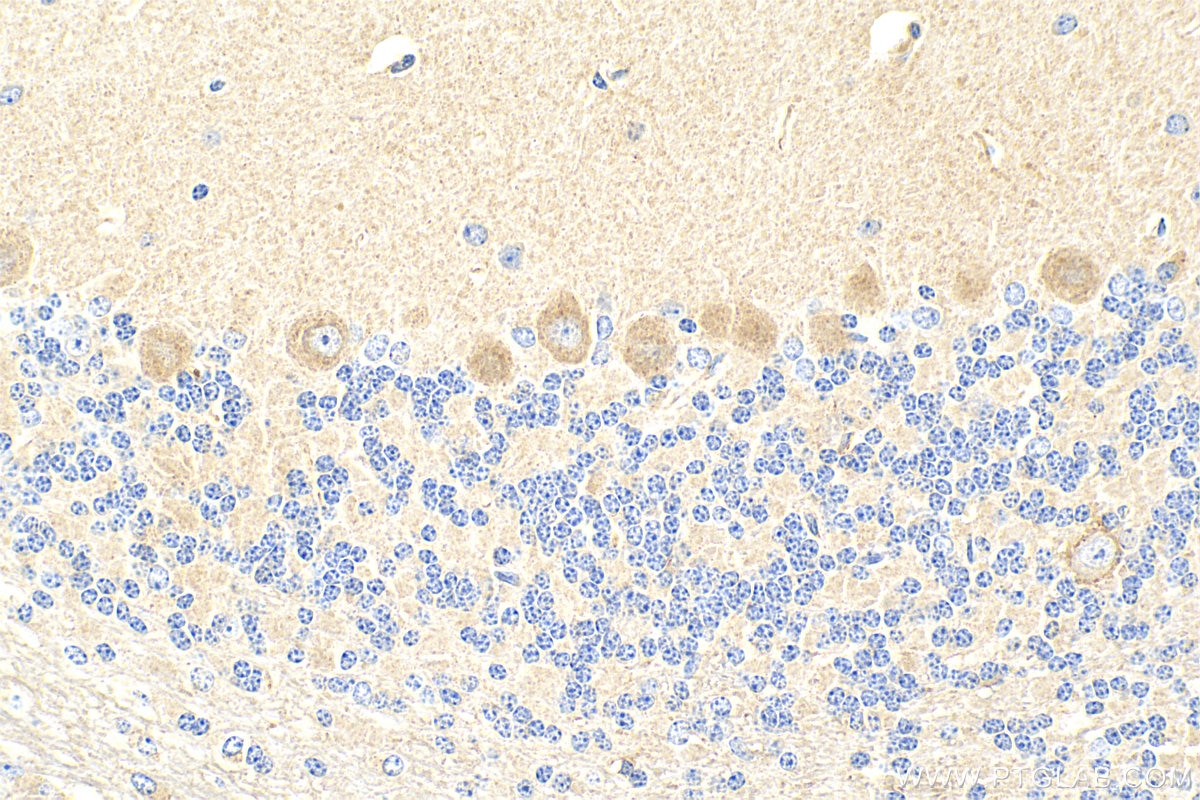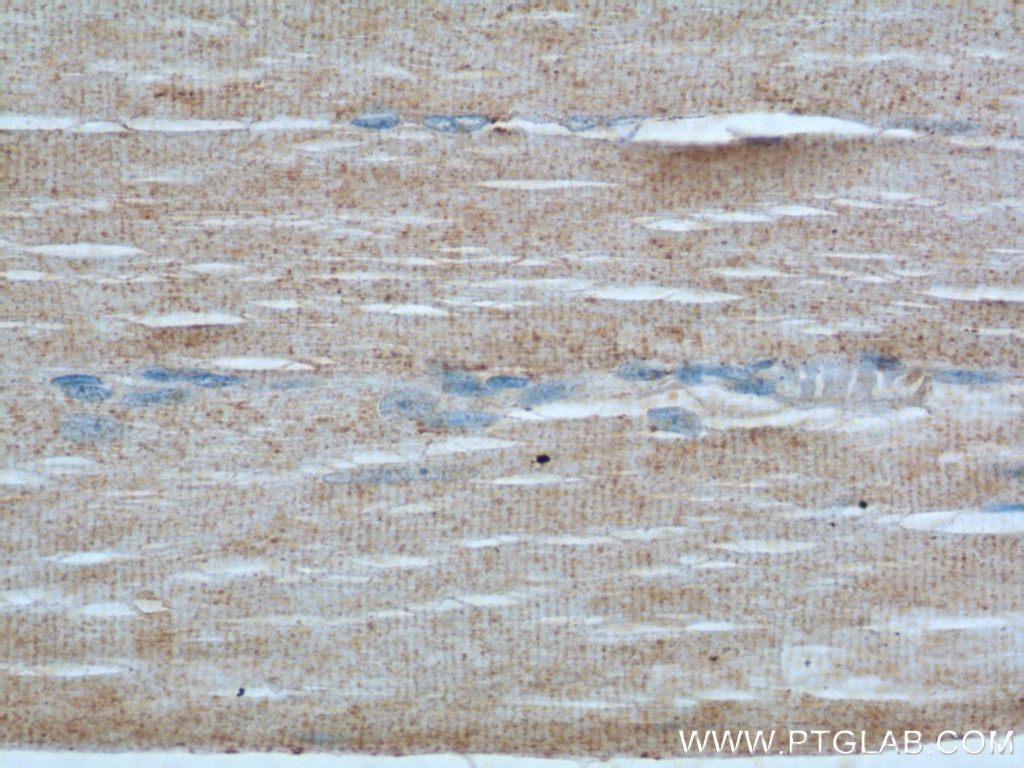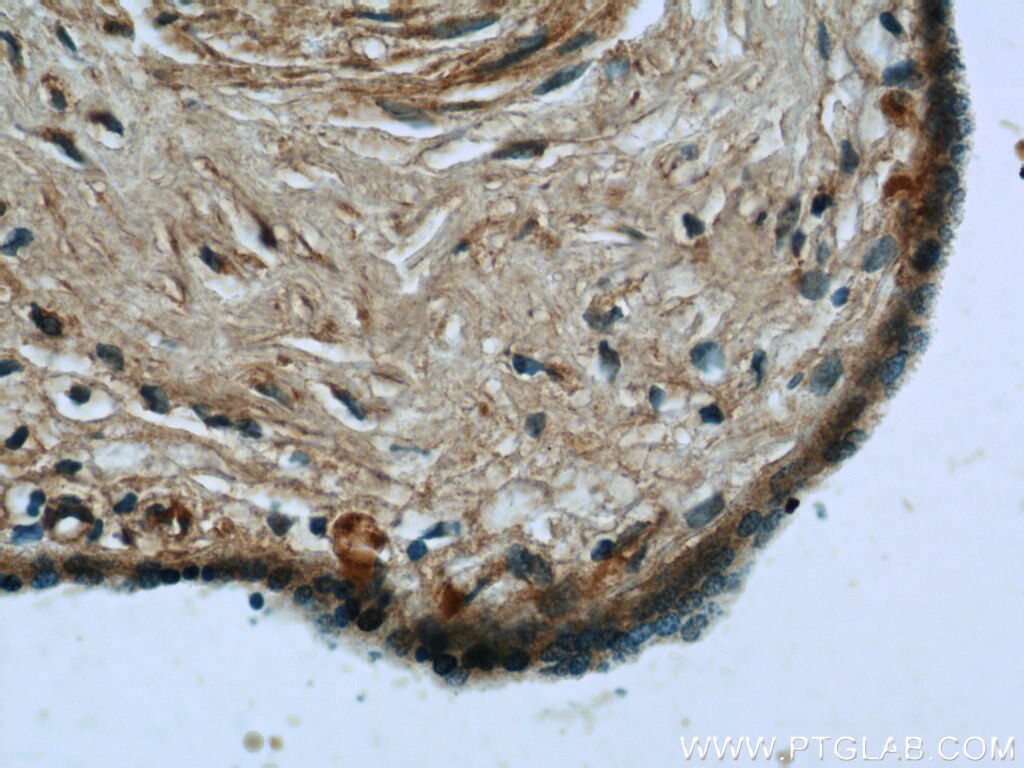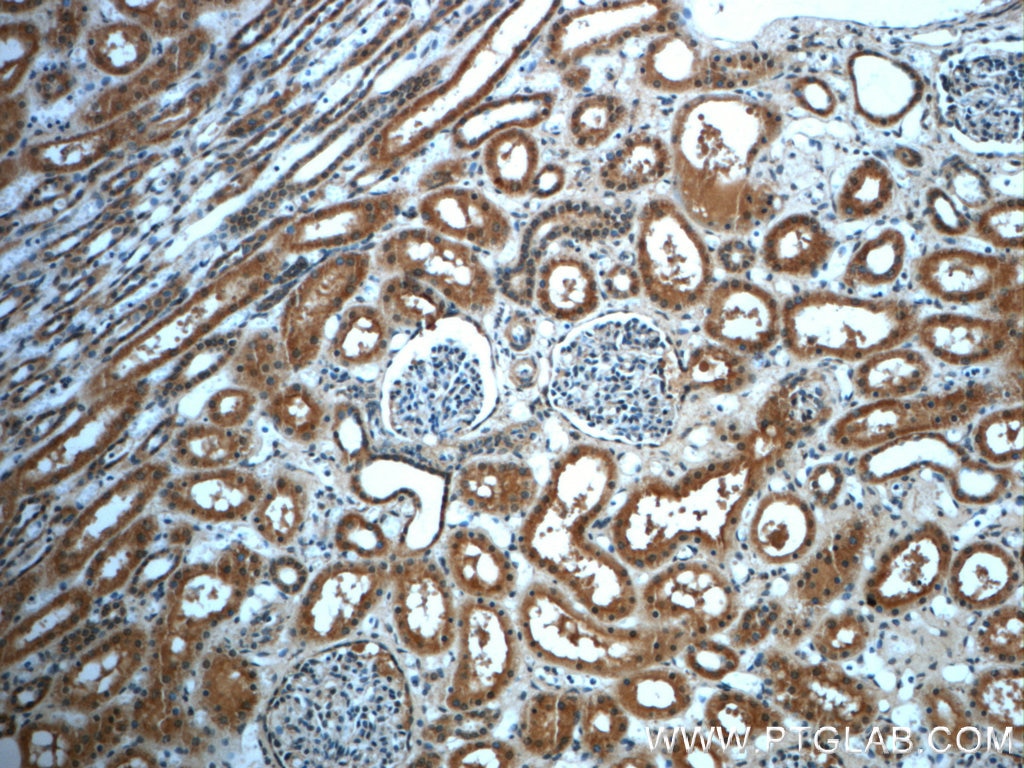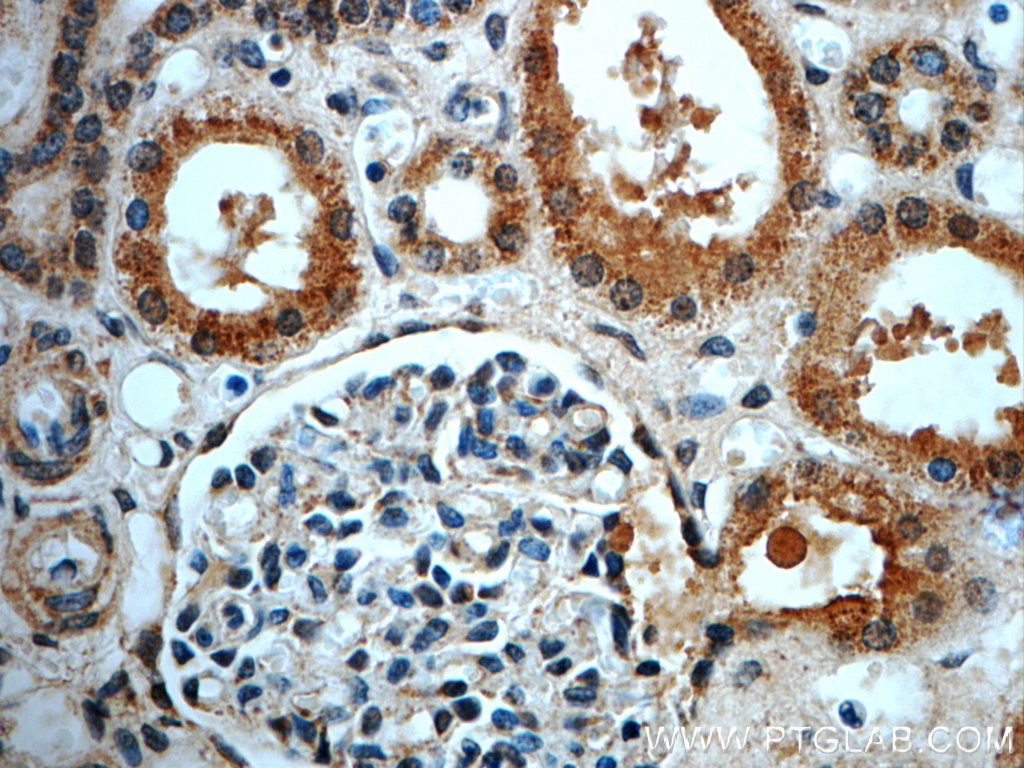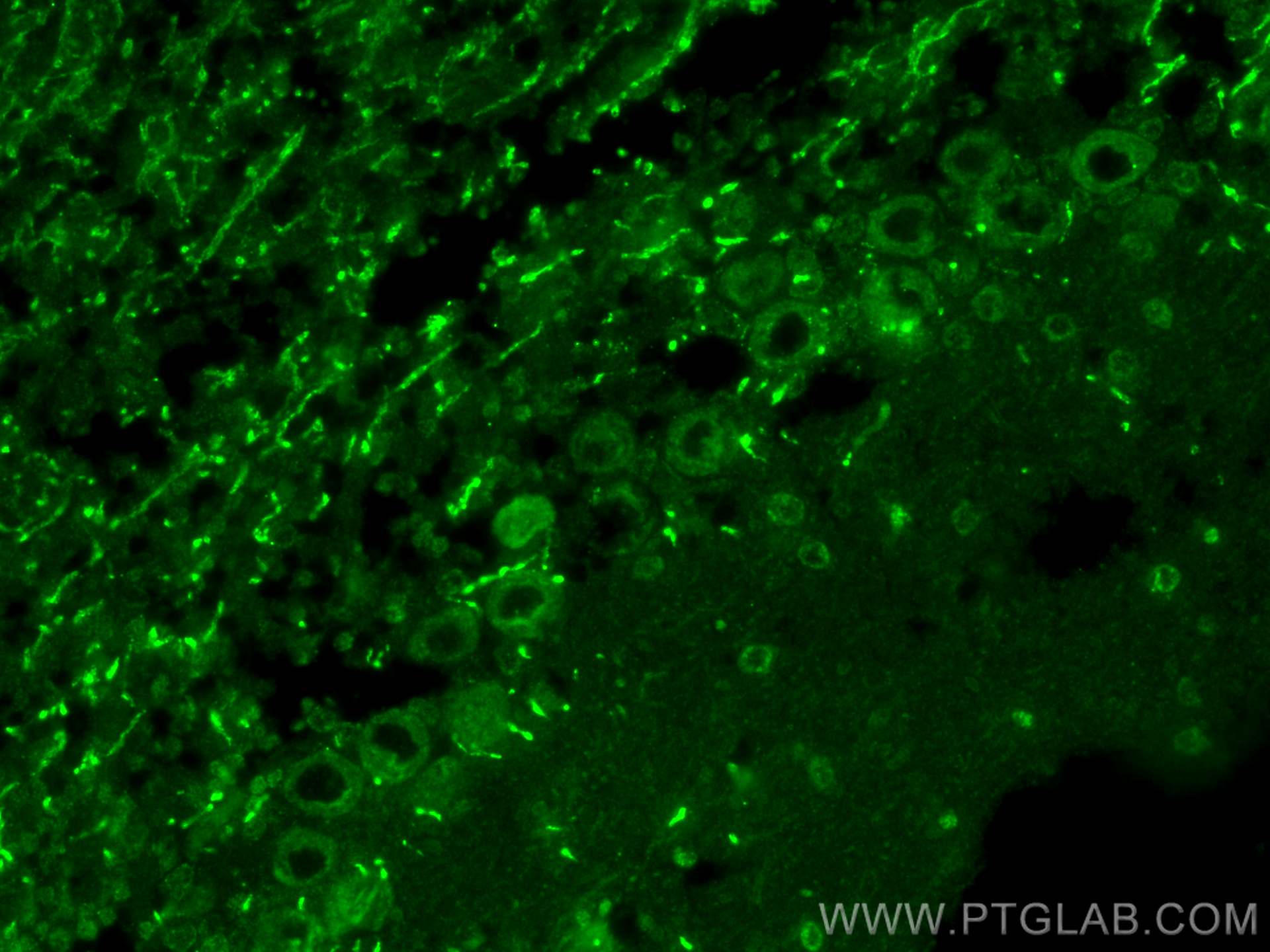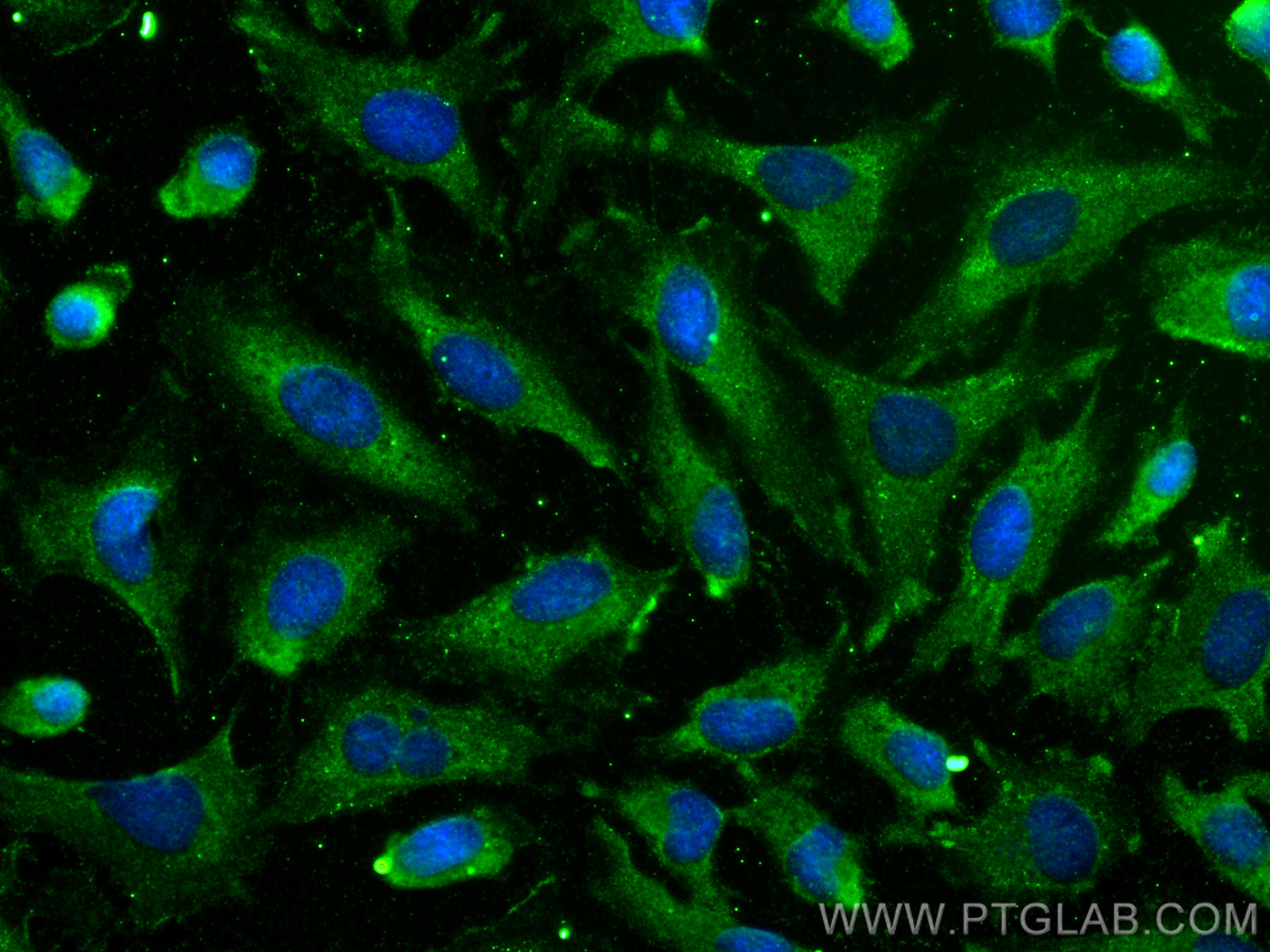Validation Data Gallery
Tested Applications
| Positive WB detected in | human skeletal muscle tissue, HeLa cells, human placenta tissue, mouse skeletal muscle tissue |
| Positive IP detected in | mouse skeletal muscle tissue |
| Positive IHC detected in | human skeletal muscle tissue, human kidney tissue, human placenta tissue, mouse cerebellum tissue, mouse skeletal muscle tissue Note: suggested antigen retrieval with TE buffer pH 9.0; (*) Alternatively, antigen retrieval may be performed with citrate buffer pH 6.0 |
| Positive IF-P detected in | mouse cerebellum tissue |
| Positive IF/ICC detected in | HeLa cells |
Recommended dilution
| Application | Dilution |
|---|---|
| Western Blot (WB) | WB : 1:500-1:1000 |
| Immunoprecipitation (IP) | IP : 0.5-4.0 ug for 1.0-3.0 mg of total protein lysate |
| Immunohistochemistry (IHC) | IHC : 1:50-1:500 |
| Immunofluorescence (IF)-P | IF-P : 1:50-1:500 |
| Immunofluorescence (IF)/ICC | IF/ICC : 1:200-1:800 |
| It is recommended that this reagent should be titrated in each testing system to obtain optimal results. | |
| Sample-dependent, Check data in validation data gallery. | |
Published Applications
| KD/KO | See 1 publications below |
| WB | See 16 publications below |
| IHC | See 4 publications below |
| IF | See 5 publications below |
Product Information
22779-1-AP targets LIFR in WB, IHC, IF/ICC, IF-P, IP, ELISA applications and shows reactivity with human, mouse samples.
| Tested Reactivity | human, mouse |
| Cited Reactivity | human, mouse, pig |
| Host / Isotype | Rabbit / IgG |
| Class | Polyclonal |
| Type | Antibody |
| Immunogen |
CatNo: Ag18742 Product name: Recombinant human LIFR protein Source: e coli.-derived, PGEX-4T Tag: GST Domain: 906-1097 aa of BC153096 Sequence: NNVEVLETRSAFPKIEDTEIISPVAERPEDRSDAEPENHVVVSYCPPIIEEEIPNPAADEAGGTAQVIYIDVQSMYQPQAKPEEEQENDPVGGAGYKPQMHLPINSTVEDIAAEEDLDKTAGYRPQANVNTWNLVSPDSPRSIDSNSEIVSFGSPCSINSRQFLIPPKDEDSPKSNGGGWSFTNFFQNKPND 相同性解析による交差性が予測される生物種 |
| Full Name | leukemia inhibitory factor receptor alpha |
| Calculated molecular weight | 1097 aa, 124 kDa |
| Observed molecular weight | 190 kDa, 170 kDa |
| GenBank accession number | BC153096 |
| Gene Symbol | LIFR |
| Gene ID (NCBI) | 3977 |
| RRID | AB_2879165 |
| Conjugate | Unconjugated |
| Form | |
| Form | Liquid |
| Purification Method | Antigen Affinity purified |
| UNIPROT ID | P42702 |
| Storage Buffer | PBS with 0.02% sodium azide and 50% glycerol{{ptg:BufferTemp}}7.3 |
| Storage Conditions | Store at -20°C. Stable for one year after shipment. Aliquoting is unnecessary for -20oC storage. |
Background Information
LIFR, also known as CD118, is a subunit of a receptor for leukemia inhibitory factor (LIF). LIF is a pleiotropic cytokine of the interleukin-6 family which affects the differentiation, survival, and proliferation of a wide variety of cells in the adult and the embryo. LIFR is the low-affinity binding chain that, together with the high-affinity converter subunit gp130, forms a high-affinity receptor complex that mediates the action of LIF. The high-affinity complex also binds a related cytokine, oncostatin M (PMID: 8999038). LIFR has also been identified as a breast cancer metastasis suppressor that functions through the HIPPO-YAP pathway (PMID: 23001183). LIFR appeared as doublets with 190 and 170 kDa (PMID: 10858440). They represented different glycosylated forms of the LIFR in different steps of protein maturation.
Protocols
| Product Specific Protocols | |
|---|---|
| IF protocol for LIFR antibody 22779-1-AP | Download protocol |
| IHC protocol for LIFR antibody 22779-1-AP | Download protocol |
| IP protocol for LIFR antibody 22779-1-AP | Download protocol |
| WB protocol for LIFR antibody 22779-1-AP | Download protocol |
| Standard Protocols | |
|---|---|
| Click here to view our Standard Protocols |
Publications
| Species | Application | Title |
|---|---|---|
Nat Metab LIFR regulates cholesterol-driven bidirectional hepatocyte-neutrophil cross-talk to promote liver regeneration | ||
Nat Commun A targetable LIFR-NF-κB-LCN2 axis controls liver tumorigenesis and vulnerability to ferroptosis.
| ||
Clin Transl Med Aptamer-SH2 superbinder-based targeted therapy for pancreatic ductal adenocarcinoma. | ||
Hum Mol Genet Mutations in the leukemia inhibitory factor receptor (LIFR) gene and Lifr deficiency cause urinary tract malformations. | ||
J Exp Clin Cancer Res miR-589 promotes gastric cancer aggressiveness by a LIFR-PI3K/AKT-c-Jun regulatory feedback loop. |

